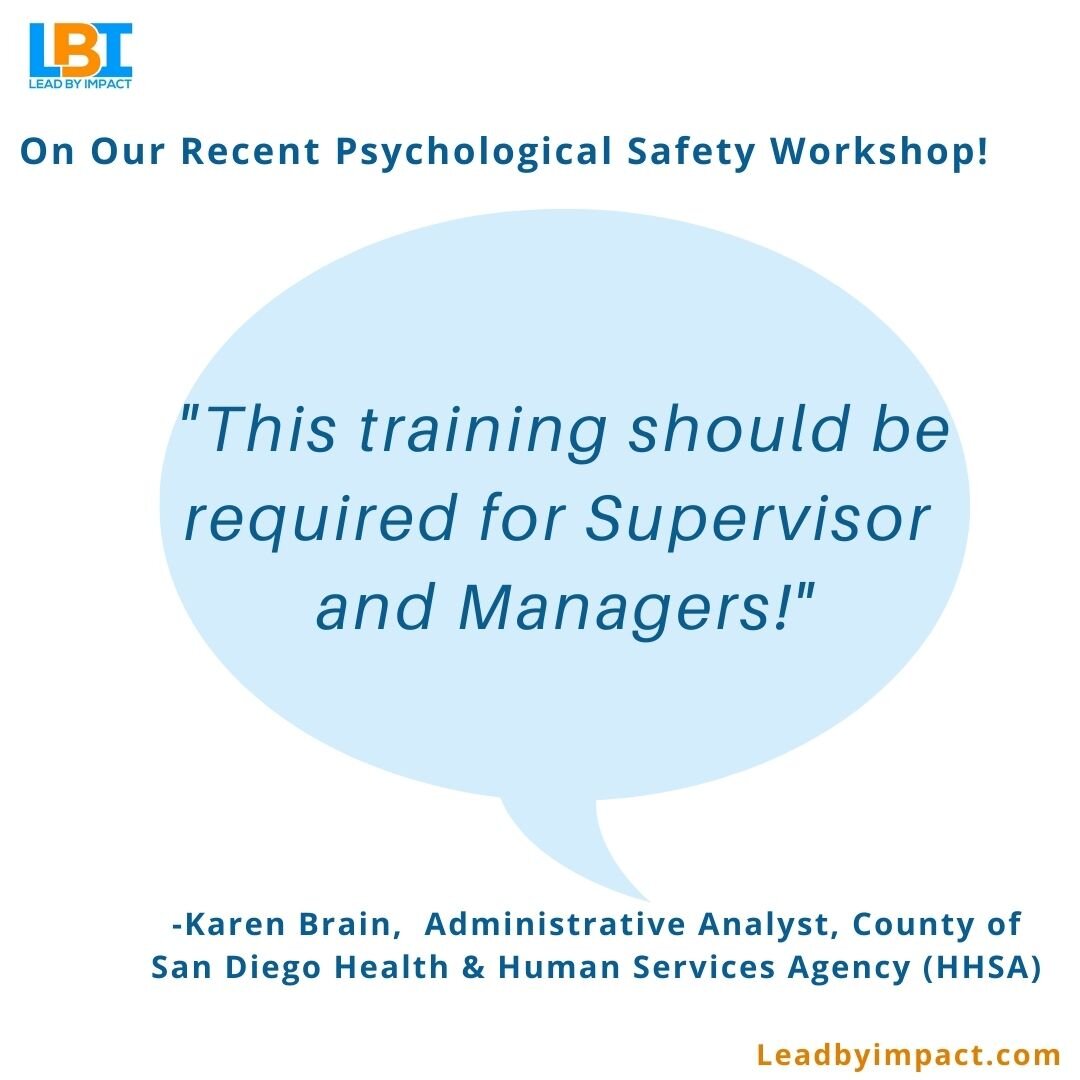Psychological Safety Workshop
Less conflict, more safety. Have healthy productivity with a team that works together through a psychological safety workshop.
You have a talented team of professionals who have a hard time working with one another. They aren’t talking to each other to work through the problems. Instead, they remain silent, shut down, disengaged, and work in silos.
They don’t share because they’re frightened about looking dumb. They worry about looking incompetent or as someone who doesn’t belong. People worry about others talking about them behind their back. They even worry about losing their jobs because of a mistake.
Productivity is now going down the drain.
Psychological safety workshop
Creating Psychological Safety within your team
You want your team to be at their best but they need to feel a sense of safety so they can be open and honest with one another, so they can challenge and grow together. For over the past 10 years, I have helped leaders and teams to create small behavioral and environmental changes through psychological safety training that can lead to a happier and more productive team. Together I will help you learn how to have a safe and strong foundation in your culture so that everyone thrives - yes, you and your entire team.
What is psychological safety in the workplace?
Imagine working in a space where there is absolute freedom to speak your mind. When you share an idea, people encourage you. When you bring up mistakes, you receive thanks and appreciation. People celebrate the fact that you brought up the dirt underneath the rug.
Psychological safety at work allows for more, innovation, collaboration, open communication, and healthy disagreement.
When people feel safe they can share ideas, which fuels creativity. They can share mistakes they made, which allows the team to learn. They can work with one another knowing that the team has their back. People want to show up to work and there is less turnover. If people don't feel safe, they aren't staying around.
How to promote psychological safety
We give people language and mental models to understand what is psychological safety. They will learn the research behind it and the benefits of it. This is part of the process we go through in our psychological safety training.
STEP 1: LEADING WITH VALUES
To create safety, we want to understand what safety means to the group. Figuring out their values helps them get a sense of what safety means to each of them. Leading them to identify where they align as a group.
STEP 2: USE PRACTICAL EVERYDAY EXPERIENCES
Companies often stop at values, and this is where the mistake is. We go deeper into understanding what these values mean in practical terms. Making sure the team understands what these values look like on a daily basis.
STEP 3: REFINE PSYCHOLOGICAL SAFETY
Like any other good team, they will need practice. It's not about gaining knowledge, it’s about applying what we’ve learned on a consistent basis. So when game time comes and they need people to speak and engage with one another, they know what to do to help each other feel safe and be productive. We do not want to give you the fish, we want to teach you how to fish, removing us from the equation.
They will know how to engage in healthy conflict. Collaborate with one another. And produce better outcomes to become a high-performing team.
Three principles to be to use when creating psychological safety
Principal 1: Help people feel heard
Have you ever had a meeting where you were asked to share ideas and the moment you did; you were shut down? Either you were told it was a bad idea, or they tried that before, or someone explained how it would not work.
These types of statements often prevent people from speaking up in the future. They think, “What’s the point, they will just shut down my idea.” They no longer feel safe speaking up because they think their idea will be judged in a way that makes them look bad.
Giving people the space to openly share any idea without making them feel bad, wrong, or stupid
will create a completely different culture. When your team feels heard, they are more likely to open up. They start sharing more with their team and staff. Now people are communicating in a manner that gets more things done.
Principal 2: Help people feel considered
We share this principle because it’s a subtle, but very important difference from principle #1. After people are heard, what happens next? Often times leaders create a space for people to speak but then don’t show the team how they thought about what was said.
If your staff doesn’t feel considered, it can feel like a waste of time for them. This is also helpful when leaders feel pressure to execute all of the team’s ideas. If you can show them, you considered what they said, they will worry less about their own idea being chosen.
Here’s the tricky part. You may have thought deeply about what your staff said, but do they know that? It’s not just considering what they said, it’s about helping them feel considered.
Everyone wants to feel important, and helping them feel considered is a great way to do so. This will help your team feel safer to share openly with each other. It will also strengthen their collaboration.
Principal 3: Help people feel included
After they feel heard and considered, now we bring them into the process itself. Giving them the ability to help shape choices and decisions. Again, this does not mean you have to do everything they say. But it's a way to deepen the feeling of being heard and considered.
In this principle you invite your staff to be real contributors to whatever is being worked on. If your staff believe they can shape what happens with the company, they will feel more excited to show up and work with one another.
Try to use these three principles whenever you are working with your staff. It will help create a culture where people feel safe to share their ideas and become more involved in the process.
We use these three (and other) principles when we run our workshops.
A Psychologically Safe Team Culture
If you are ready to stop people from distancing themselves from each other and working in silos. To stop producing poorer outcomes while becoming jaded in the process. Then it’s time for honest dialogue to share ideas and secure a culture of collaboration. Click below to book a free consultation to discover how our psychological safety workshop can bring your team culture together.


